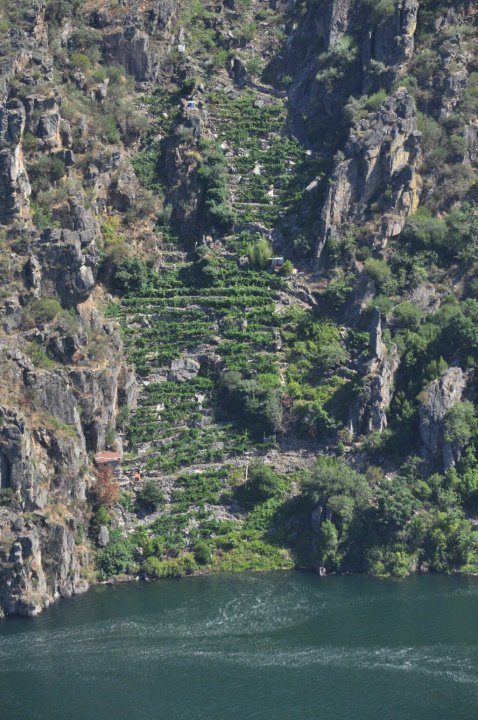Spain > Galicia > Ribeira Sacra > Pasal de Esile
Organic Practices, Vegan
ribeira sacra
The Ribeira Sacra is located in central Galicia, on the banks of the Miño and Sil rivers in the south of the province of Lugo and north of the province of Ourense, which has more than 2000 years of history.
The name actually predates Christianity in the region, and originated as Rovoyra Sacrata, a sacred oak grove. In the early 17th century, in a history of the Benedictine Order in the region, the name was mis-transcribed as Rivoyra Sacrata- sacred riverbank.
Vines were introduced by the Romans who had important mining operations in the region. After the fall of the Empire in the later 5th century, the region became a center of monastic life with many important monasteries established between the 6th and 12th centuries. This pattern of landholding and wine production continued relatively unchanged until the mid 19th century when many Church properties were sold off and many vineyards abandoned. Phylloxera then delivered a second blow to the region, which is only in the past few decades seeing a real recovery in winemaking with its historic, indigenous grapes; principally Godello for white wines and Mencia for reds.
The DO was established in 1996 and is divided into five subzones; Amandi, Chantada, Quiroga-Bibei, Ribeiras do Miño and Ribeiras do Sil. There are some 90 wineries in the DO.
climate & terroir
The climate in Ribeira Sacra DO is more continental than Atlantic, and has long hot summers and cool autumns.
The Miño Valley has around 30 inches of annual rainfall around 30 inches per year and an average temperature of 57 degrees F. The Sil Valley has a slightly more continental climate a degree or so cooler on average and with 6-8 inches less annual rainfall.
With slopes of up to 85%, vineyards are mostly terraced and entirely hand-worked. This landscape is one of only a few in Spain designated as “Heroic Viticulture” by The Centre for Research, Environmental Sustainability and Advancement of Mountain, Steep Slope and Small Islands Viticulture (CERVIM).
Soils in the Minho valley tend towards granitic. In the Sil valley where Pasal de Esile is produced, soils show an abundance of clay and slate. These soils also provide good drainage and favor prolonged ripening of grapes, since they absorb the sun's heat during the day and release it at night.
Pasal de esile
Owned by important Ribeira Sacra producer Rectoral de Amandi, Pasal de Esile is a separate property located in the Sil Valley. The winery is housed in a converted 17th century monastery and has some 50 acres under vine. The estate produces only one wine, the superb Pasal de Esile Godello. The vineyard is sited on a unique red clay soil that imparts a vibrant minerality to the wine, which is aged on its fine lees to develop body and character.
The vineyards are worked without the use of chemicals and no additives are used in winemaking. Weed control (and a small amount of fertilization) is provided by a flock of sheep which grazes between the rows of vines. Fermentation is driven by a culture of yeasts derived from their own vineyards, with fermentation and ageing all in stainless steel.
The wine is lush and balanced, with moderate acidity, bright fruit, floral and mineral notes and a long, savoury finish.
Certified Heroic Viticulture in the Ribeira Sacra
Detail 3
Donec ac fringilla turpis. Vivamus a ante congue, porta nunc nec, hendrerit turpis.
Detail 4
Donec eu est non lacus lacinia semper. Vivamus sit amet semper lacus, in mollis libero.




